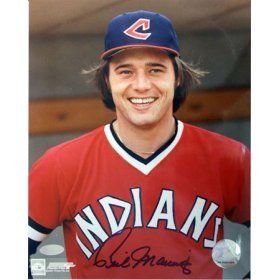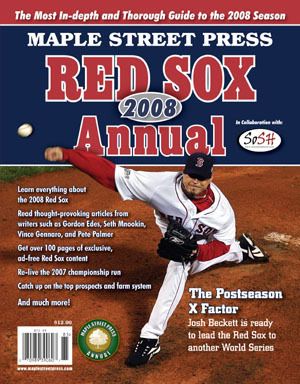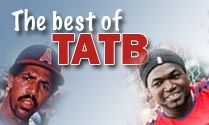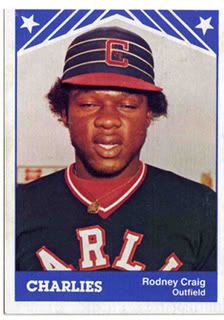These sports books have the write stuff

It's safe to say that most sports writers had a passion for sports before they had a passion for words. It's certainly true in my case. Long before I ever read the Catcher in the Rye by J.D. Salinger, I had read the Catcher in Wry by Bob Uecker. I suppose I wasn't the most well-rounded boy.
I mention this because in its most recent issue, Sports Illustrated ranked the top 100 sports books of all-time. Now, I may have little more than a couch potato's knowledge about Bill Belichick's defensive schemes, and heaven knows I struggle to comprehend what "strategy" is on Grady Little's wee mind. But sports books? There's a subject I can discuss for days.
I have more sports books than Shawn Kemp has children. I have read lousy bios (Balls: The Graig Nettles Story) and half-hearted money-makers (Nick Cafardo's The Impossible Team, about last season's Patriots). Recently, I read The Franchise: The History of Sports Illustrated, which coincidentally or not, didn't make SI's list.
Turns out I have read 34 of SI's selections - 35 if you include the countless hours spent leafing through the Baseball Encyclopedia. (I'm pretty sure that among all the inhabitants of this planet, only Peter Gammons has read it cover to cover.) I suppose that 34 of 100 is quite a few, especially since SI made some obscure selections. Big Red of Meadow Stable? Um, I'll wait for the movie, thanks.
My five favorites come to mind quicker than the names of the five starters for the 1985-'86 Celtics: Road Swing, by Steve Rushin. Heaven is a Playground, by Rick Telander. Ball Four, by Jim Bouton. The Breaks of the Game, by David Halberstam. And Semi-Tough, by Dan Jenkins.
They are listed in no particular order, since asking a reader to rank his favorite books is like asking a parent to rank his children. But each passes the ultimate test: Open the book to any page at any time, and you are guaranteed to kiss the next hour goodbye.
The list was a great idea, and I imagine that Sports Illustrated's mailbags will be filled with letters nitpicking their decisions. I have my gripes, too. Road Swing, the 4-year-old instant classic by SI columnist Rushin, is well down the list at No. 90. What, no respect for their own guy? At least he's not alone. Not one of Rick Reilly's eight books made the cut.
As a matter of fact, SI made enough surprising omissions to fill a shelf at Barnes and Noble. If you owned every one of their picks, your sports library still wouldn't be complete.
So here are five more that SI's editors ought to crack open. If they do, I know they won't be able to put them down.
• The Prophet of the Sandlots, by Mark Winegardner (published in 1990): The author spent a year on the road with Tony Lucadello, a legendary scout for the Philadelphia Phillies who was gradually being phased out by the organization. He does not go gracefully, and the twist at the end is terribly tragic.
Footnote: Lucadello pleads with the Phillies to draft a promising Miami University shortstop whom he believes to be the second coming of Mike Schmidt. Tim Naehring was good, but not that good.
• A Season Inside, by John Feinstein (1988): Not as groundbreaking or controversial as his career-making bestseller A Season on the Brink, but a more fulfilling read for a college hoops junkie. While Brink has one compelling central character in Bob Knight, Inside has several - Danny Manning, David Robinson, Jim Valvano and various other hoops newsmakers who gave Feinstein seemingly unlimited access during the 1987-88 season.
Footnote: In what has to be the all-time most ignorant and cruel act by a sports crowd, Arizona State fans chanted "P,L,O, P,L,O" at Arizona star Steve Kerr. Three years earlier, Kerr's father, a college president, had been assassinated by the PLO in Beirut.
• Beyond the Sixth Game, by Peter Gammons (1985): Before Gammons became sports journalism's premier gossip columnist, he was a superior reporter and writer who helped redefine the way baseball is covered. Here, he paints a detailed picture of how the talented late-'70s Red Sox were dismantled amid the changing financial landscape of baseball. Sound familiar?
Footnote: Gammons reveals that the Sox nearly traded Fred Lynn to the Yankees for Ruppert Jones and Ron Guidry in 1980.
• The Curse of Rocky Colavito, by Terry Pluto (1994): An irreverent, often sad and always entertaining look at the tragicomic history of the Cleveland Indians.
Footnote: The Indians traded 21-year-old fireballer Dennis Eckersley to the Red Sox for one very juicy reason. Eckersley's wife was having an affair with one of his teammates, an outfielder named Rick Manning. The two players could no longer co-exist as teammates, and the Indians' so-called braintrust decided that Manning was the better long-term prospect. Oops. Wrong decision. Manning hit .257 with 56 homers in an undistinguished 13-year career, while The Eck has baseball immortality waiting for him in Cooperstown. That's what makes them the Indians, I guess.
• Stolen Season, by David Lamb (1991): Lamb, a world-weary foreign correspondent for the Los Angeles Times, rents an RV and takes off on a nostalgic journey through the back roads of America, stopping at various minor-league ballparks along the way. It's been described as a Travels With Charley for sports nuts. I liked Lamb's book better than ol' what's-his-name Steinbeck's. Shocking, huh?
Footnote: Lamb chronicles the struggles of a Durham Bulls third baseman named Dave Butts, who can't seem to snap out of a terrible slump despite the support and encouragement of his manager. "Don't worry," said the manager, curiously named Grady Little. "He'll get his hits." I wonder if Little ever thought of Dave Butts while watching Tony Clark flail away last season.
(Originally published in the Concord Monitor, 2002)













|
<< Home